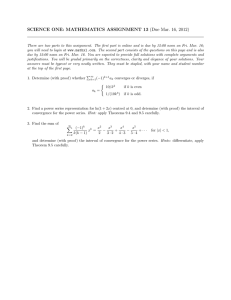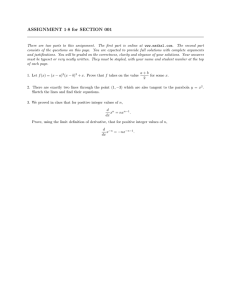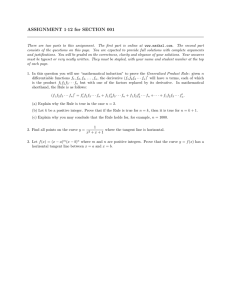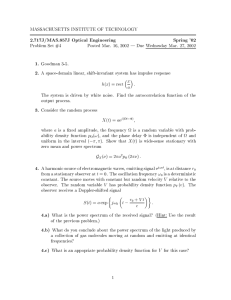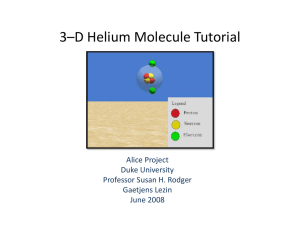SCIENCE ONE: MATHEMATICS ASSIGNMENT 12 (Due Mar. 9, 2012)
advertisement
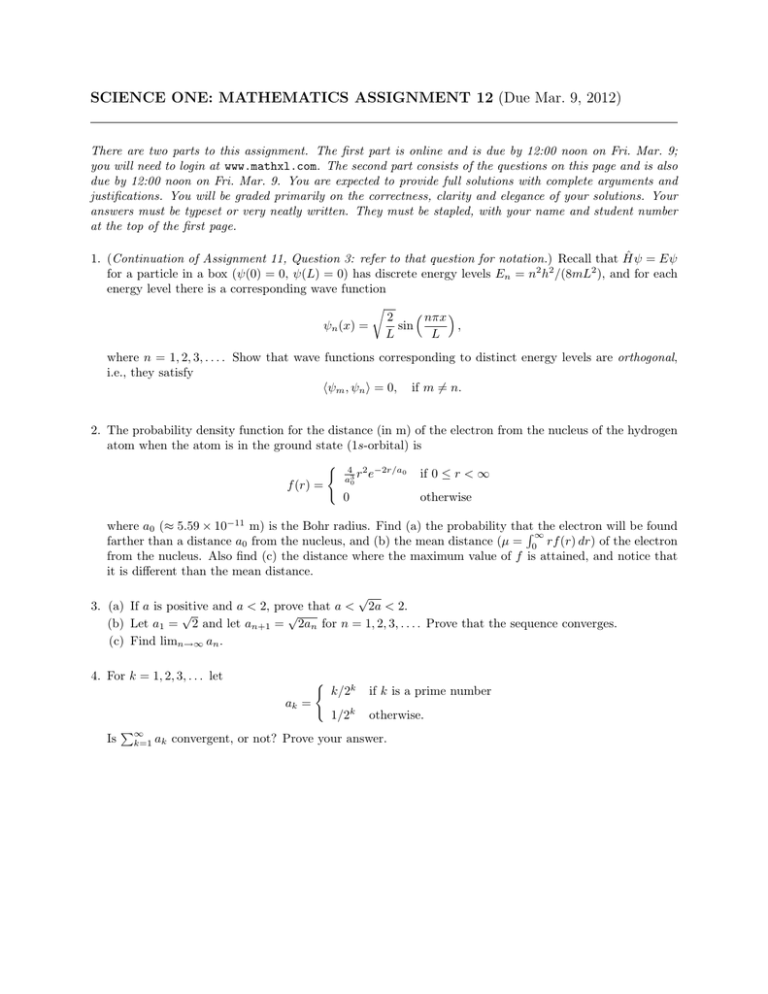
SCIENCE ONE: MATHEMATICS ASSIGNMENT 12 (Due Mar. 9, 2012) There are two parts to this assignment. The first part is online and is due by 12:00 noon on Fri. Mar. 9; you will need to login at www.mathxl.com. The second part consists of the questions on this page and is also due by 12:00 noon on Fri. Mar. 9. You are expected to provide full solutions with complete arguments and justifications. You will be graded primarily on the correctness, clarity and elegance of your solutions. Your answers must be typeset or very neatly written. They must be stapled, with your name and student number at the top of the first page. 1. (Continuation of Assignment 11, Question 3: refer to that question for notation.) Recall that Ĥψ = Eψ for a particle in a box (ψ(0) = 0, ψ(L) = 0) has discrete energy levels En = n2 h2 /(8mL2 ), and for each energy level there is a corresponding wave function r nπx 2 ψn (x) = , sin L L where n = 1, 2, 3, . . . . Show that wave functions corresponding to distinct energy levels are orthogonal, i.e., they satisfy hψm , ψn i = 0, if m 6= n. 2. The probability density function for the distance (in m) of the electron from the nucleus of the hydrogen atom when the atom is in the ground state (1s-orbital) is ( 4 2 −2r/a 0 r e if 0 ≤ r < ∞ a30 f (r) = 0 otherwise where a0 (≈ 5.59 × 10−11 m) is the Bohr radius. Find (a) the probability that the electron will be found R∞ farther than a distance a0 from the nucleus, and (b) the mean distance (µ = 0 rf (r) dr) of the electron from the nucleus. Also find (c) the distance where the maximum value of f is attained, and notice that it is different than the mean distance. √ 3. (a) If a is positive and a < 2, prove that a < 2a < 2. √ √ (b) Let a1 = 2 and let an+1 = 2an for n = 1, 2, 3, . . . . Prove that the sequence converges. (c) Find limn→∞ an . 4. For k = 1, 2, 3, . . . let ( ak = Is P∞ k=1 k/2k if k is a prime number 1/2k otherwise. ak convergent, or not? Prove your answer.
